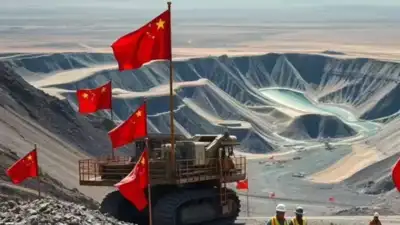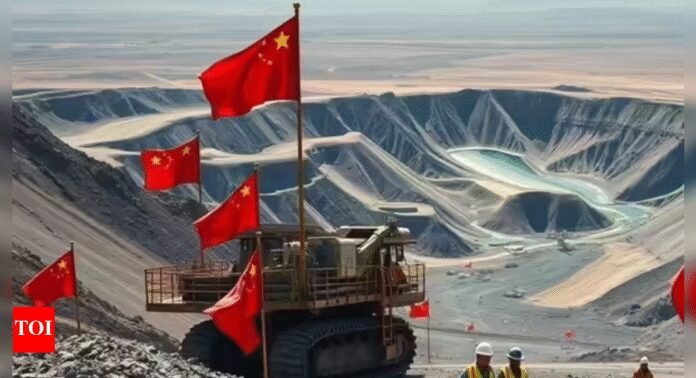China’s Rare Earth Export Limits: Effects and Results
Global Car Supply Chain Issues

China’s limits on rare earth exports have caused big problems. They disrupted the global car supply chain. Many carmakers had to stop production. Even the US President had to go back to the negotiating table. But at home, these limits have hurt Chinese magnet makers even more.
Beijing’s Response and Its Effects
In April, Beijing set these limits. This was a reply to US tariffs. The move greatly affected rare earth and magnet exports. This happened as the local economy showed signs of weakness. Electric cars, a key sector, are already facing challenges. This has made the situation worse for magnet producers.
Falling Exports and Stopped Production
A Reuters report said magnet exports dropped by 75% in the two months after the export controls. Many global carmakers had to pause production. Although the US and China announced a deal on June 27 to restart rare earth trade, it will take time to put into action.
Stockpile Build-Up and Lost Revenue
Just 12 hours after the deal was announced, the state-backed Baotou Rare Earth Products Exchange posted on WeChat. They said stock was piling up in warehouses. They warned that the damage would not be fixed quickly. The Baotou exchange, in Inner Mongolia, called the impact in May a “crisis” for local magnet producers.
Reliance on Foreign Sales
Even though China makes 90% of the world’s rare earth magnets, foreign sales are still crucial. In 2024, foreign sales made up between 18% and 50% of total revenue for the 11 largest publicly listed magnet firms.
Sales Pressured from Both Sides
“Their sales are now being pressed from both sides – disrupted exports and weak local demand,” said Ellie Saklatvala, head of metal pricing at Argus. “They have temporarily lost an important part of their customer base, with no certainty about when they will get it back.”
Revenue Drops and Production Cuts
Two rare earth magnet producers told Reuters that revenue is expected to fall in 2025. They did not want to be named due to the sensitivity of the issue. One producer said the export limits would have a “huge impact” on business. Small- and mid-sized players have already cut production by around 15% in April and May.
Share Prices Recover, but Future Still Bleak
Like US chipmaker Nvidia, Chinese rare earth firms are caught in the middle of geopolitical crossfire. After an initial share price crash in April, some listed magnet producers have bounced back. But analysts warn the recovery is not supported by industry basics.
Market Forecasts and Private Players
“I see various market forecasts, more or less negative depending on the assumptions, but none of them show a lasting rise in share price like we’re seeing,” said Cory Combs, head of critical minerals research at Trivium China. He added that many players in the industry are private, limiting the insight that stock prices can offer.
Pressure from Electric Car Price War
Magnet makers are also under pressure at home due to a tough electric car price war. Car makers are demanding price cuts from part suppliers. Making things worse is the custom nature of most magnet products, which makes them hard to resell locally. Four sources told Reuters that producers are being forced to store unsold shipments while they wait for export licenses.
Industry Prepares for Long Disruption and Possible Shake-Up
Some companies have admitted the strain. Baotou Tianhe Magnetics Technology Co warned of possible export revenue risks in its annual report published in late April. Yantai Zhenghai Magnetics said last week that it had received export licenses and operations were running normally, while delaying financial details to upcoming reports.
Slow Recovery and Lots of Paperwork
However, analysts warn that rare earth trade flows are unlikely to return to pre-limit levels any time soon. “Looking at China’s recent export controls on other critical minerals – such as antimony – it is clear that it can sometimes take longer than expected for exports to resume and normalize,” said Argus’ Saklatvala.
China set similar export limits on germanium and antimony across 2023 and 2024. Despite being mostly used in civilian sectors, which theoretically face fewer licensing hurdles, exports have yet to fully recover. Europe, for instance, is now receiving only a fraction of the antimony it once imported from China, leading to shortages for lead-acid battery makers.
Consolidation and Industry Pressures
David Abraham, a professor at Boise State University, said the export license process now involves lots of paperwork, leading to delays and added costs. “In some sense, there’s no going back,” he said.
With the industry made up of hundreds of manufacturers, the growing pressures could spark consolidation. “I do not know if Beijing sees that as a bad thing, because further consolidation is helpful for controlling and understanding where materials go,” Abraham added.



